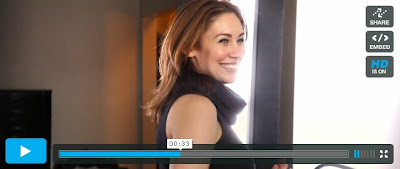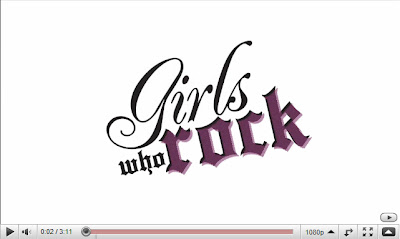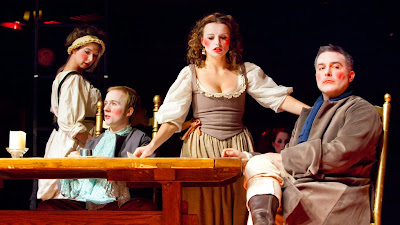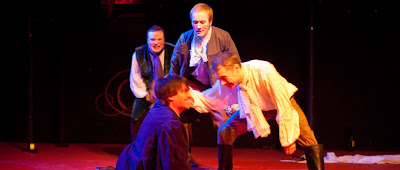
Chamber Images: Headshot Reel from Chamber Images on Vimeo.
The top three complaints I hear from actors about getting their headshots done are:
1. Feeling rushed.2. Feeling too anxious or nervous to look natural in their photos.
3. Feeling like all the photographer cares about is the money and not the product.
I address these issues head on and base my approach to headshots on eliminating them.
Taking Our Time
My sessions last from 3 to 5 hours, but really we shoot however long it takes. I only do one session per day and that's time we spend shooting, getting to know eachother, and talking about what we've shot and what direction we can take things. There's no stop watch, ticking clock, or other actor waiting in line behind you putting pressure on you to be America's Next Top Model in the next five minutes or you're out hundreds of dollars. Of course that doesn't mean I want to keep you there all day, but we're going to shoot however fast or slow feels right for you. And I always have a great time when I do my sessions, so I really don't mind things going longer if they need to.
Anxiety
For most people, when they go to get their headshots, they enter into a relationship with the photographer where they give up a lot of power. Naturally this differential is likely to cause a lot of tension, discomfort, and anxiety. I understand that sitting down in front of the camera isn't really the same as acting in front of an audience, at least not at first. The character is you, the camera has no appreciation for timing nor much of the skill set you've built up as an actor, and you're putting a week or more worth of pay on the line to do something that is often pretty uncomfortable. Who wouldn't be nervous?
There's a lot of things I do to reduce anxiety during the session. Here are three of the biggest things:
1. Collaboration
We work together to get you good headshots. Instead of treating the session like you're sitting for a painting, waiting for me, the artist, to render you in my particular style, with you having no idea what the product will look like until the very end, I treat it more like we're putting a website together. In other words, the process involves me checking in with you to make sure that what I'm doing matches up with what you need and want. You see the photos appear on a nearby laptop and big screen television as we shoot. During breaks we review every single image and you tell me what you're concerned about and if anything isn't working for you. I don't pressure you to like the photos, instead I work to ensure that we minimize or stop doing what isn't working for you and keep doing more of what does while also giving you my professional feedback, answering questions, and offering you direction. By the end of the shoot, you know exactly what you're getting.
If looking at photos of yourself makes you self conscious, then we stop looking at photos, but I keep checking in in other ways to make sure you're satisfied with the direction we're going.
If you're new to headshots and you don't really know what works and what doesn't work for you, then I'll take over a little more than I usually do, but I'll also explain more so you're more knowledgeable the next time you get headshots done.
My goal is to make the session a 50/50 relationship. I don't expect you to direct the entire shoot and tell me how to take photos, but I also don't leave you completely in the dark running on nothing but blind trust, photos you've seen in my portfolio, and a prayer. Instead, we collaborate. By equalizing the power and giving you a clear idea of what you're getting, by working together and giving you say in how the photos will turn out, I hope to minimize any anxiety you might be feeling.
2. Hanging Out
I believe that the more we know each other, the more natural and "you" your headshots will be. It starts with our first meeting a week or so prior to the actual shoot. We talk about your background as an actor, what kind of roles you're getting called in for, and what kind of roles you see yourself doing in the future. We also talk about what you like and dislike about your past headshots and your experiences with other headshot photographers. I'll also go over my process and what the shoot will be like. I'll be writing everything down, so I'll know what your preferences are. By the time we actually do the shoot, it will be the second time that you've met me and you'll know more or less what to expect. Doing a session at my studio tends to feel like we're just hanging out and taking photos. It's an incredibly relaxed atmosphere with lots of conversation and music playing in the background (Pandora or your own MP3 player).
3. Acting
Most actors I've met have no idea how to utilize their acting skills for headshots. I try to bridge that gap. A lot of it just has to do with looking at the situation from different perspectives and learning how to time action differently for a still camera. Getting your headshots taken doesn't have to be an alien experience. By bringing in a familiar skill set, I hope to break down some of those barriers that normally prevent you from looking natural in front of the camera.
100% Refund
If by the end of our session you're not happy with the shoot, you don't pay me, no questions asked. Essentially you get a 100% refund. All that's wasted is time. We'll be looking through the photos as we shoot, talking about them, and by the end of the session you'll have seen every single image I've taken. If you don't feel like any of the shots are a strong candidate for a headshot you can actually use, or if you don't feel good about the shoot as a whole for whatever reason, then no money exchanges hands. I will not question your decision.
I have to get you photos you are confident with and that are good quality or I don't get paid. I have to be on top of my game every single time. Additionally, I don't want the price of the session to hang over your head while we shoot. That only produces unnecessary anxiety.
If you have any issues after our shoot, I am 110% about customer service. I'll do everything I can to help you.
Rate
I only have one price package. My rate is $500. I only do four to six headshots per month as I am involved in multiple projects and different kinds of photography.
I shoot between 300 and 500 photos which are delivered online via a website hosted on my domain. We go through multiple rounds of review to find your top three photos which I will retouch at no extra cost as part of the package and then deliver online at print resolution. Tops are limited to however many we can get through in the time we have, but it generally averages out to between four and six, though I have shot as high as ten. I generally aim for four hour sessions. I shoot indoor natural light, indoor studio on clean white, and outdoors (weather permitting) all in the same session. If we have time and you want to try something different, then I'm all up for experimenting and trying out new things.
If price is an issue, contact me and we can work out an extended payment plan. I don't work on a sliding scale, but I do offer weekly payment options. An example might be $300 on the day and $100 by check mailed to me per week thereafter. Delivery of retouched print resolution images would happen as soon as the final check clears.
Contact Me
If you have any questions or are interested in possibly doing a shoot together, please E-mail me at chris@chamberimages.com and let's meet up!



































































